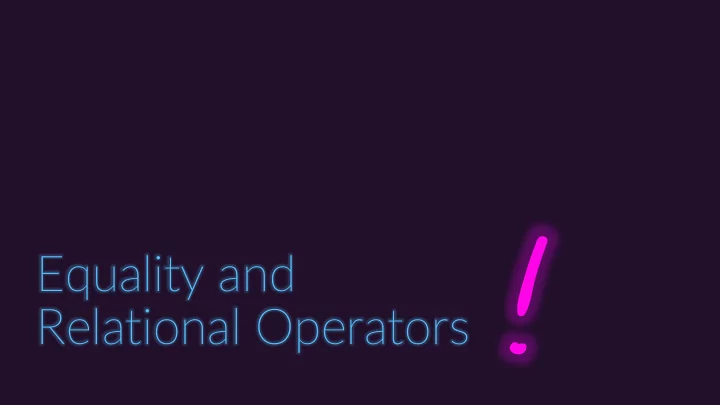

Equality and Relational Operators
How do we compare numerical and stri ring data? … with relational and equality operators! Test Math Operator "is greater than?" > > "is at least?" ≥ >= "is less than?" < < "is at most?" ≤ <= "is equal to?" = == "is not equal to?" ≠ !=
The equal to Operator is == • Two equals symbols side-by-side can be read as "is equal to?" 1 == 1 evaluates to True 1 == 2 evaluates to False • Important! Equality is very different from assignment! • = is read as "is bound to a value of" • == is read as "is equal to?" • b = x == y "The variable b is assigned the result of evaluating 'is x equal to y?' "
The not equal to Operator is != • The ! symbol in many programming languages often means "NOT" 1 != 1 evaluates to False 1 != 2 evaluates to True • b = x != y "The variable b is assigned a value of evaluating 'is x not equal to y?' "
Logical Type - bool • Literal examples: True, False • A bool , short for Boolean, can only be one of two values , either or False . • The next lesson will focus on operators: • • •
Relational Expressions evaluate to bool s • Notice the evaluation of each relational operator is a bool value • But what is on either side of the relational expression is not a bool value! • For a well typed program , use the same type of objects on both sides of a relational !
Equality and Relational Precedence & Types • These operators have lower precedence than arithmetic operators • Thus: 1 + 1 == 2 is True • Notice if == had higher precedence, then it would simplify to 1 + True which is invalid because, with strict type checking, adding a number to a boolean is non-sensible. 7
Recommend
More recommend